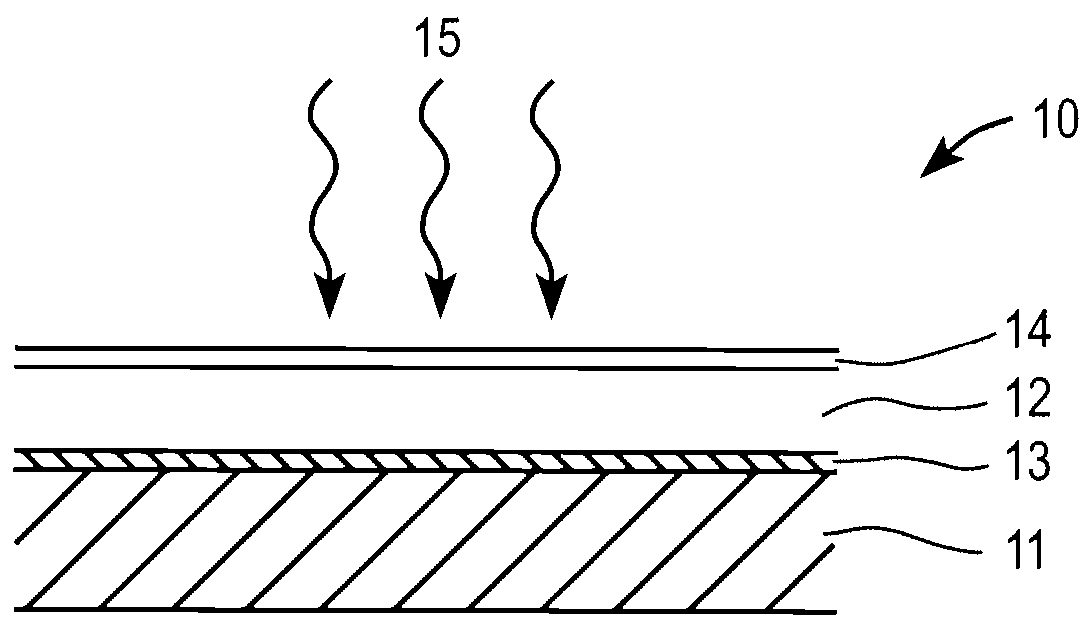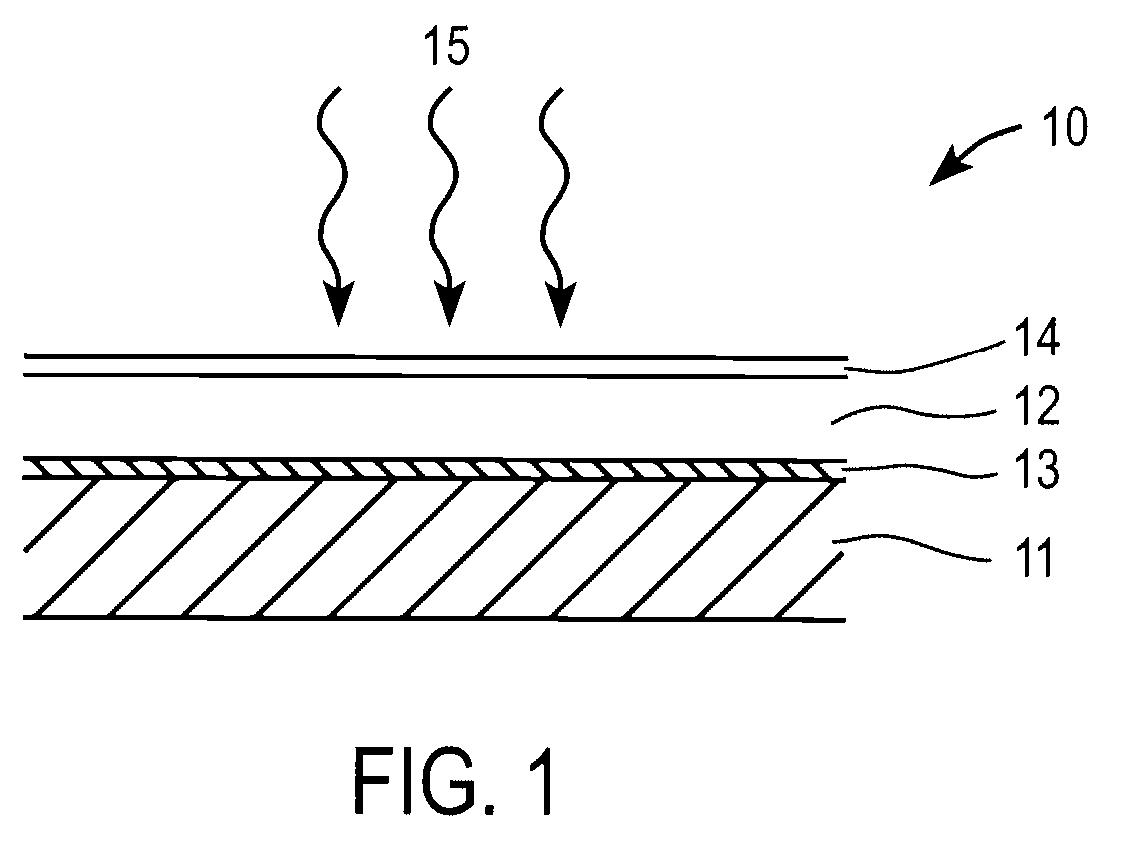Tandem solar cell structures and methods of manufacturing same
a solar cell and thin film technology, applied in the field of thin film solar cell structures, can solve the problems manufacturing such complex structures, and many challenges, and achieving the effect of reducing conversion efficiency
- Summary
- Abstract
- Description
- Claims
- Application Information
AI Technical Summary
Benefits of technology
Problems solved by technology
Method used
Image
Examples
example 1
[0030]A glass sheet or transparent polymeric foil (such as polyimide) may be used as the substrate. A transparent conductive oxide (TCO) layer, such as ZO, ITO, TO etc., may then be deposited on the substrate. The thickness of the TCO layer may be in the range of 50-500 nm, the thickness being determined by the design of the device and the current carrying capacity needed. A RuO2 film may be deposited over the TCO layer. Thickness of the RuO2 film may be in the range of 2-200 nm, preferably in the range of 10-100 nm. This film may be deposited by various techniques such as evaporation, sputtering, reactive sputtering, reactive evaporation, activated reactive evaporation, oxidation of Ru films, MOCVD, electrodeposition, ink deposition etc. A thin film polycrystalline Cu(In,Ga)(S,Se)2 absorber layer may then be deposited on the RuO2 surface by various techniques well known in the field. These techniques include but are not limited to sputtering, co-evaporation, electrodeposition, ink ...
example 2
[0031]A large bandgap thin film Cu(In,Ga)(S,Se)2 top cell may be directly fabricated on a bottom cell to form a two-terminal device using the teachings of this invention. In this case, referring to FIG. 5, the base is an already formed bottom cell 50, which may be a thin film CuInSe2 device fabricated on a transparent or non-transparent substrate 51. The general structure of the bottom cell 50 may be “substrate 51 / bottom cell contact 52 / CuInSe2 layer 53 or bottom cell absorber / bottom cell buffer layer 54 / bottom cell TCO layer 55” with an optional finger pattern (not shown) on the bottom cell TCO layer 55. A RuO2 film 56 may be deposited over the bottom cell TCO layer 55. Thickness of the RuO2 film 56 may be in the range of 2-200 nm, preferably 5-100 nm, most preferably 5-20 nm. This film may be deposited by various techniques such as evaporation, sputtering, reactive sputtering, reactive evaporation, activated reactive evaporation, oxidation of Ru films, MOCVD, electrodeposition, in...
PUM
 Login to View More
Login to View More Abstract
Description
Claims
Application Information
 Login to View More
Login to View More - R&D
- Intellectual Property
- Life Sciences
- Materials
- Tech Scout
- Unparalleled Data Quality
- Higher Quality Content
- 60% Fewer Hallucinations
Browse by: Latest US Patents, China's latest patents, Technical Efficacy Thesaurus, Application Domain, Technology Topic, Popular Technical Reports.
© 2025 PatSnap. All rights reserved.Legal|Privacy policy|Modern Slavery Act Transparency Statement|Sitemap|About US| Contact US: help@patsnap.com



